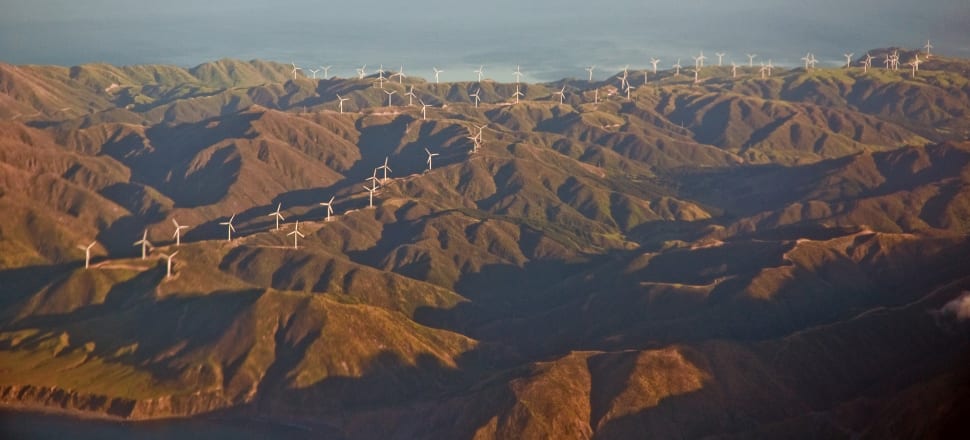
Newly-released data shows greenhouse gas emissions continued to fall through 2022, suggesting New Zealand has passed peak climate pollution, Marc Daalder reports
Analysis: A drop in greenhouse gas emissions due to Covid-19 measures was sustained well beyond the end of movement restrictions and lockdowns, new data shows.
In fact, climate pollution continued to fall through all of 2022, with the December 2022 quarter delivering the lowest figure in at least nine years barring the period covering the first lockdown, Statistics New Zealand reported on Thursday. While the pace of the decline isn't yet sufficient to meet New Zealand's climate goals, it suggests we have well and truly bent the emissions curve and are on our (slow but steady) way to a net-zero economy.
The figures from Stats NZ are provisional and calculated using a different methodology than New Zealand's official emissions reporting. But they offer a much quicker and more regular look at the country's decarbonisation progress than the official annual tallies, which are released on a two-year lag. They also don't include the carbon-sucking impacts of forestry.
READ MORE: * Coal use plummets to 32-year low * Internal report finds major risks to NZ's climate plan
The release includes data up until the end of 2022 and future releases will be sped up even further, with October's expected to deliver the figures for the first half of this year.
The new release shows emissions decreases in 2020 and 2021 are not just temporary, but the start of a long-term trend of falling emissions.
In fact, the December 2022 emissions figure of 18.4 million tonnes was the lowest in the Stats NZ dataset (which goes back to the March quarter in 2014) other than the June 2020 quarter, which took in the effects of New Zealand's month-long national Level 4 lockdown. That's even after adjusting for different seasonal transport and industrial patterns.
While annual emissions in New Zealand peaked in 2006, they roughly flatlined after that. The year before the pandemic saw the third-highest level on record, but the new data suggests we are unlikely to return to that. In fact, while comparisons between the Stats NZ and official figures are rough, the official tally for 2022 is likely to be the lowest since the year 2000 and possibly before that.
In other words, our climate emissions last year may have been our best figure in this century.
A closer look at the figures shows emissions fell in 2022 in every category bar transport, service industries and mining. The greatest decrease came in carbon pollution from electricity – as Newsroom reported previously, coal use hit a 32-year low in New Zealand last year at the same time as wind and solar generation hit record highs.
The sharpest rise was in transport, which saw an additional 852,000 tonnes as compared to 2021. The 13 million tonnes of carbon emitted from transport in 2022 represent a partial recovery from the period of Covid-19-related movement restrictions, but still fall short of 2019's 15 million. Even if transport does fully recover in future years, the trends in other sectors more than outweigh the difference.
None of this means emissions won't occasionally rise in future years, particularly when the lakes feeding hydroelectric stations run low. But the trend from here on out is downwards – and besides, the Government is looking for ways to ensure we aren't reliant on fossil fuels in dry years anyway.
In the past, emissions have fallen slightly only to rise again. Now, the momentum from climate policy and global economic trends in favour of decarbonisation is too much to overcome. Sparking another about-face in emissions would be swimming against the tide.
The key question now is not the direction of travel but the pace.
Annual emissions fell 5 percent in 2020, another 1 percent in 2021 and then 3 percent last year. These are good figures – particularly for last year without the noise of the Covid-19 response.
While New Zealand has ambitious climate targets, these are generally framed in net terms and therefore include the option to offset emissions with forestry or (for our Paris target) offshore carbon credits. Thus, the declines called for in gross terms in the Government's Emissions Reduction Plan and in advice from the Climate Change Commission are relatively modest – only between 1 and 3.5 percent a year.
Keeping up reductions of the pace achieved in 2022 would be sufficient to meet those targets, but over-performing could be even better. That would lessen our reliance on the politically-thorny issue of exotic plantation and carbon forestry and also carve off some of the $3.3 to $23.7 billion bill for overseas credits.
Kevin Hague, former chief executive of Forest & Bird, has a favourite metaphor when it comes to climate change.
"The analogy I use is the oil tanker. Ordinarily, it's really hard to change the direction of an oil tanker and the New Zealand economy is like that. Under normal circumstances, it's very difficult to make it do something different," he told Newsroom in 2020.
Turning it around is slow. For a while, it seems like it's not moving at all. Then when it starts moving in the right direction, it takes a while to build up speed.
That's where we're at now.
The tanker has turned – now we just have to get it to port.







